
 |
|
|
Corn
Volume 58 Number 16 Date 08/22/2013 CORN ROOTWORM - The annual survey of adult rootworms has been completed in five of the nine crop reporting districts. Examination of 156 cornfields across the southern and central areas indicates populations are slightly lower than last year, although individual fields in Columbia, Dunn, Grant, Green Lake, Lafayette, Rock and Walworth counties still have very high counts of 3.0-8.0 per plant. District average counts are 0.6 in the southwest, south-central 0.7 per plant in the south-central, 0.8 per plant in the southeast, 0.2 per plant in the central and 0.4 in the west-central region. An average of 0.75 or more adult corn rootworms per plant (in continuous corn) indicates control in the form of crop rotation, using a Bt-rootworm hybrid or applying an at-planting soil insecticide should be considered to prevent root damage in 2014. Beetle populations exceeding this threshold have been noted in 28 of the 156 (18%) fields surveyed to date. WESTERN BEAN CUTWORM - Moth counts have declined to fewer than two per trap at all monitoring locations. As of August 21, the state total is only 642 moths in 116 traps, an 80% decrease from the 3,290 moths collected last season. The highest individual count for the eleven-week monitoring period was 60 moths near Montello in Marquette County. Possible explanations for the unprecedented decline in moth numbers are that larval populations were reduced by last year's drought or that high mortality occurred during the 2012-13 winter months, although both theories are speculative. CORN EARWORM - Locally heavy flights were registered in Dane and Fond du Lac counties for the third consecutive week. Larvae resulting from the August migration have been observed in silking corn fields as far north as Dunn County, and treatments are under way. Sweet corn producers should continue to check fields regularly for this pest as long as moths are appearing in pheromone traps and green silks are present. A count of 5-10 moths in three nights indicates the need for protective treatment of susceptible silking fields. Counts this week were: Byron 272, Chippewa Falls 15, Coon Valley 2, Cottage Grove N 2, Green Lake 78, Janesville 0, Marshfield 0, Manitowoc 0, McFarland 162, Ripon 51, Sun Prairie N 227, Sun Prairie W 10, Wausau 2, and Watertown 4. -- Krista Hamilton, DATCP Entomologist 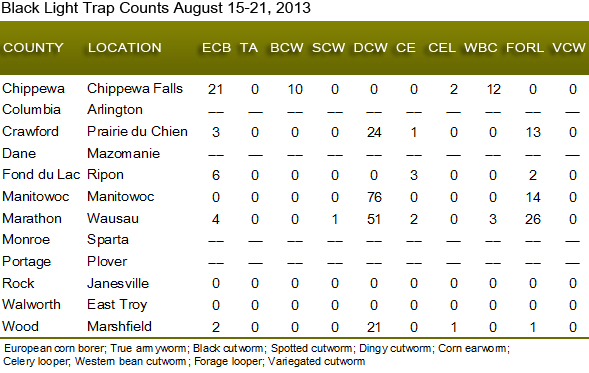
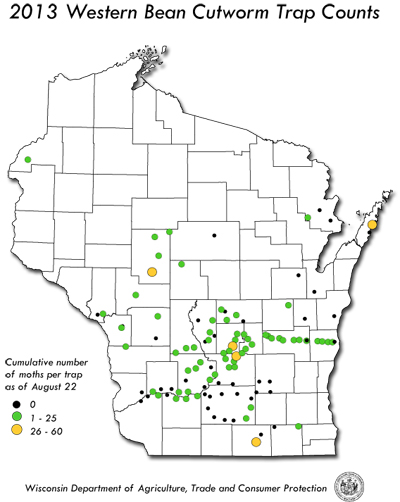
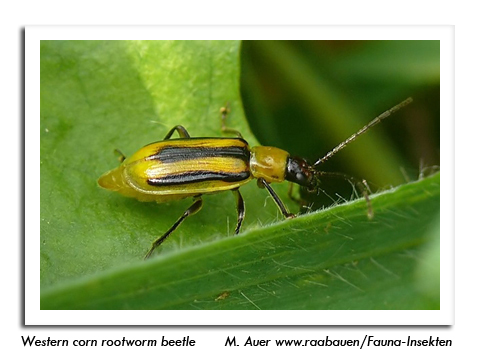
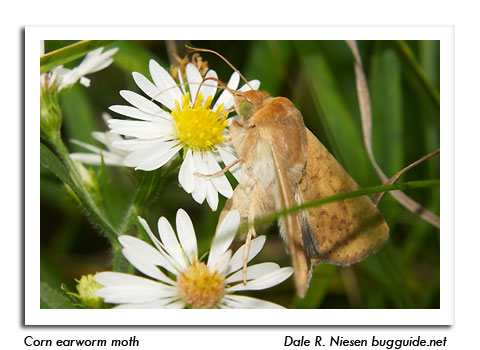
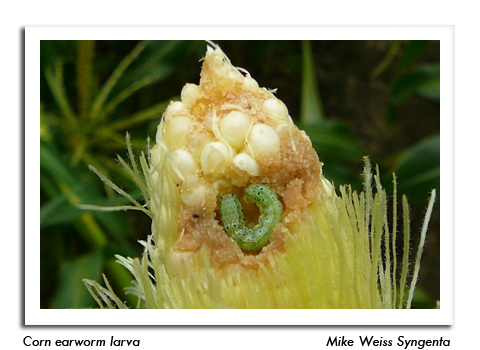
|
|
|